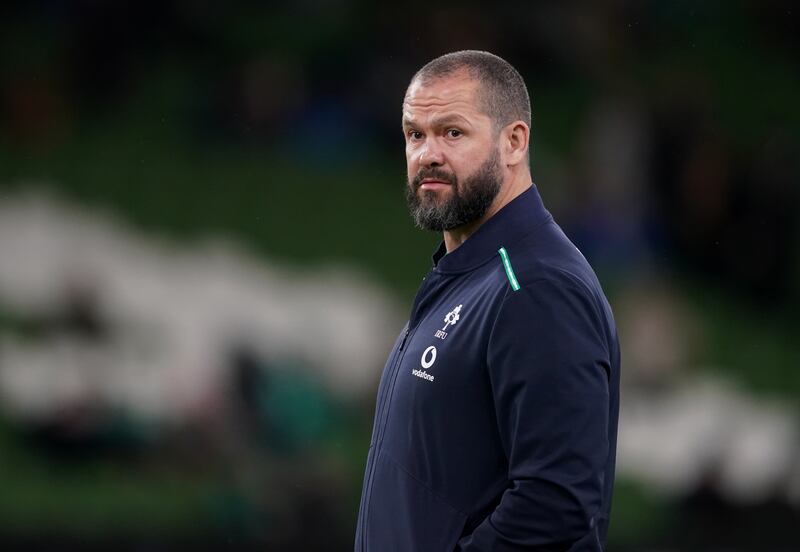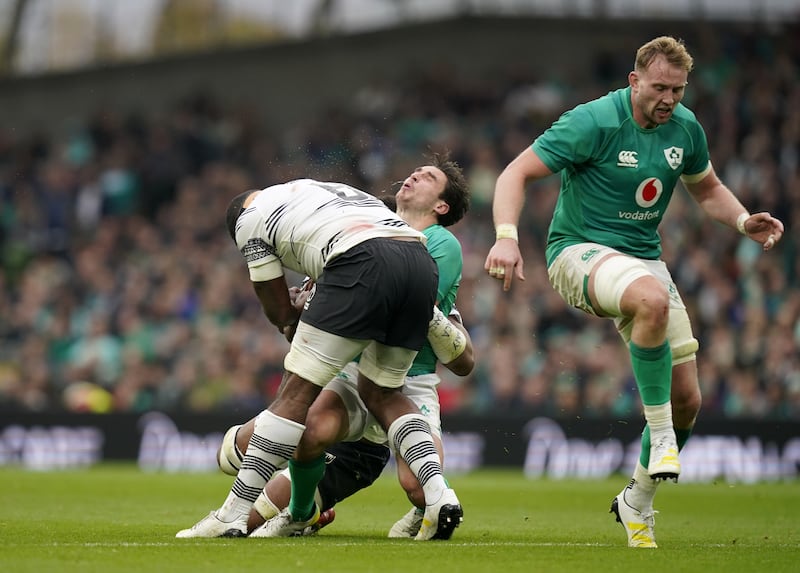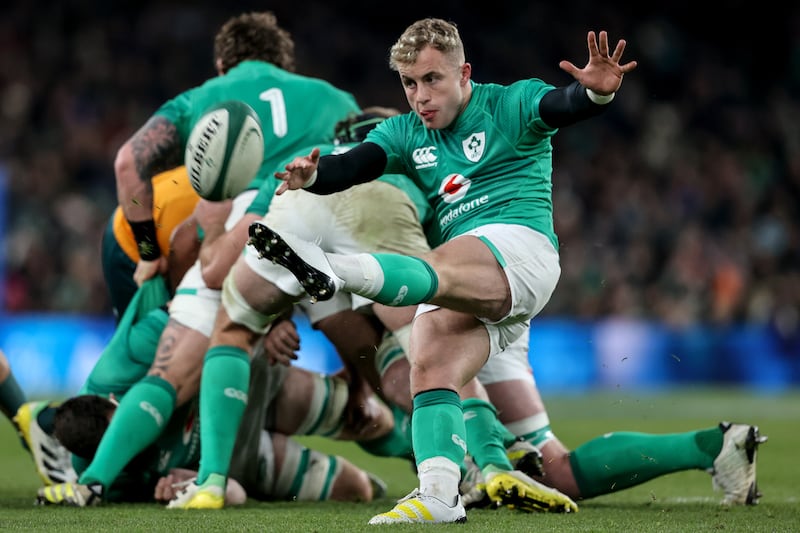High time we get serious about concussion
You might have seen Nic White, the Australian scrumhalf, go off for a Head Injury Assessment (HIA) in the second half of the match on Saturday. As White was picking himself off the ground after making contact, he clearly wobbled. His feet were not steady. He did not have control of his balance. He was, as they say in the concussion literature, ataxic. Ataxia Symptoms: Poor co-ordination. Walking unsteadily or with the feet set wide apart. Poor balance. Difficulty with fine motor tasks, such as eating, writing or buttoning a shirt. Change in speech ... and on it goes. Then you would have seen White appear back into the game, his HIA tests completed. What did we learn over the series? Nothing. Rugby continues to be devoid of any real concern for player welfare.
Depth chart a work in progress

Andy Farrell hoped to learn some things about his team. Given that it is about 10 months from the Rugby World Cup, depth in the squad in some key positions is an ongoing issue and a work in progress. The coach will be pleased with how Ireland closed out the match against a poor Australian side and with the team’s collective defensive performance in the first half. Overall, he has to ask how the squad will fare if Andrew Porter or Tadhg Furlong are unavailable, if Tadhg Beirne, James Ryan or Caelan Doris are injured. Where does he reach if Johnny Sexton and Jamison Gibson-Park are taken out early in the tournament? Farrell needs a full deck going to Paris. That means Jacob Stockdale, Iain Henderson, James Lowe, Robbie Henshaw, Jordan Larmour and the rest have to be fit and in form in order to avert a repeat of 2015. Even then the depth seems too shallow.
Ireland live up to top billing

On the upside, Ireland won the three matches against world champions South Africa, Fiji and Australia. In most previous years one of those would have been lost. Coming on the back of the historic series win over New Zealand during the summer is a positive indicator that the team has progressed. The importance of winning and maintaining the number one status during November and over the coming months until the Six Nations offers more ranking points is an important piece of psychological kit for Ireland. In rugby that is important. The brutally physical game against the Springboks showed Ireland have the staying power to compete until the end and stay competitive in the face of different challenges. Factoring in the Southern Hemisphere teams were at the end of a long and tiring summer is reasonable mitigation. Still, winning all three is progress.
Duty of care not being adhered to

Linked to but different from the HIA issue, coaches need to wise up and referees too. The dangerous tackle on Joey Carbery during the Fiji game was disgracefully reckless and the player involved was rightly shown the red card. Afterwards Fiji coach Vern Cotter staunchly claimed that his player Albert Tuisue did not deserve to be sent to the line for the high tackle – a shoulder directly into face. Similarly, when Dan Sheehan, with ball in hand, ran into an upright Australian number eight Rob Valentini on Saturday and the heads clashed, it was deemed not dangerous by New Zealand referee Ben O’Keeffe. World Rugby has a chance over the coming months to stop the chaos, confusion and inconsistency. Dangerous red card tackles, where another player is injured and forced out of the match, deserve more thought about consequences. Perhaps a mandatory three-month suspension and 40 hours of voluntary work in a Head Trauma Centre.
Casey makes his mark against Wallabies

It was useful for Irish coach Andy Farrell to have a longer look at scrumhalf Craig Casey when he was not being rag dolled by a rampant New Zealand team in the RDS. The young Munster scrumhalf finished the series on a high, his change of direction and quick thinking against Australia releasing Bundee Aki to barrel over for Ireland’s second half try. Casey is a different player to Conor Murray, who is a known quantity to Farrell. With Gibson-Park in control at nine, Murray’s experience can easily see out tough games and his physical presence is an asset. But for offensively sniping, probing and hustling players around him, Casey showed a more confident side to his game, a side that was capable and in the heat of the moment a point of difference between the teams.















